
economics, political economy, Holy Roman history, mathematical ecology, other things that interest me
He finds that sage temples and birthplaces are also associated with low rates of journal publications and intellectual activity in modern history, perhaps showing cultural backwardness.
7/
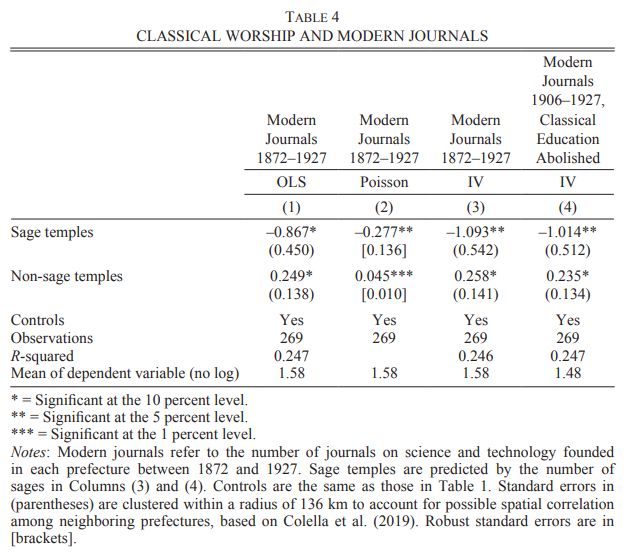
He finds that sage temples and birthplaces are also associated with low rates of journal publications and intellectual activity in modern history, perhaps showing cultural backwardness.
7/
As such, Ma looked at the link between firm foundations and the birthplaces of the sages, centuries or millennia earlier. That should be unrelated with characteristics of the area later when the shrines were built. The association holds.
6/
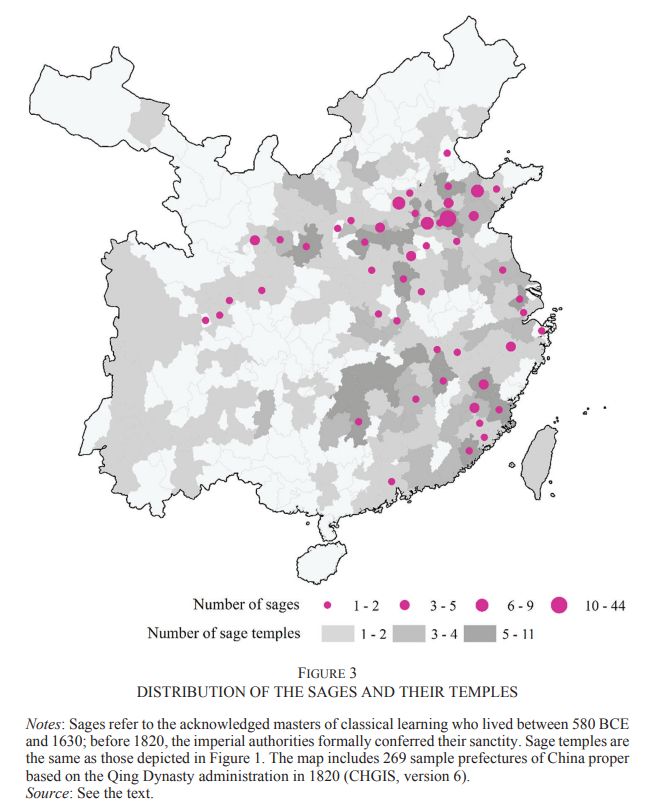

As such, Ma looked at the link between firm foundations and the birthplaces of the sages, centuries or millennia earlier. That should be unrelated with characteristics of the area later when the shrines were built. The association holds.
6/
This might show that areas which worshipped ancient wisdom were less likely to take up on modern economic ideas.
5/

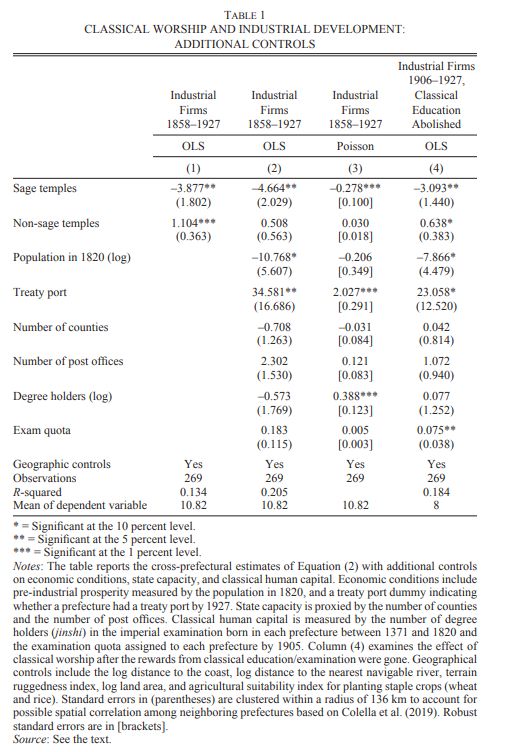
This might show that areas which worshipped ancient wisdom were less likely to take up on modern economic ideas.
5/
He suggested that we might be able to use temples to the "sages", the founts of ancient knowledge, as proxies for more traditional forms of culture in Qing Chinese history.
3/
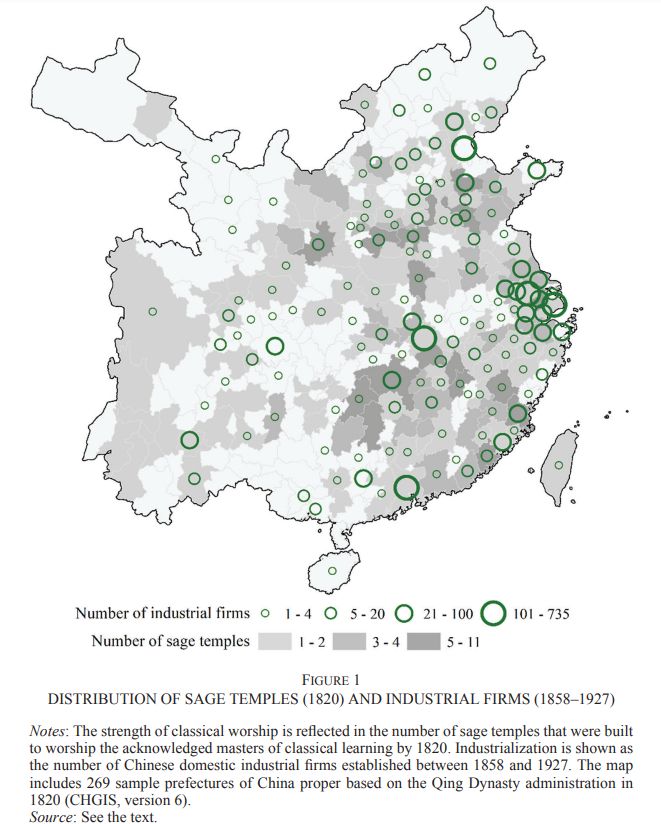
He suggested that we might be able to use temples to the "sages", the founts of ancient knowledge, as proxies for more traditional forms of culture in Qing Chinese history.
3/
Economists are not famous for their discussions of culture and religion. However, increasingly they have come to recognize that culture might play a role in influencing long-term economic growth.
China might provide an interesting case study.
1/
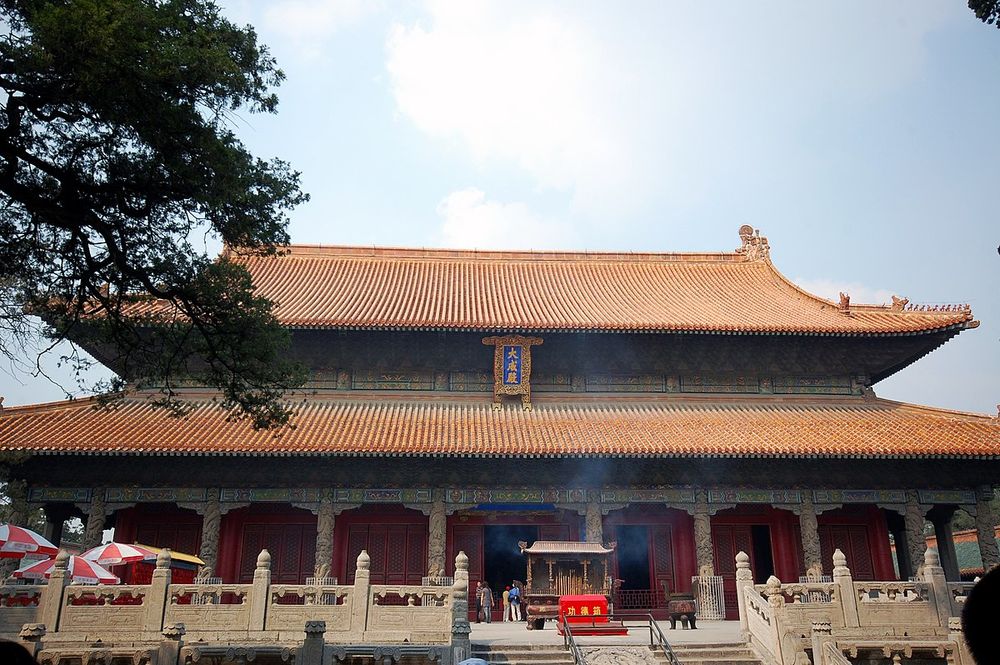
Economists are not famous for their discussions of culture and religion. However, increasingly they have come to recognize that culture might play a role in influencing long-term economic growth.
China might provide an interesting case study.
1/

For example, it comes out that white people and rich people tend to have lower Cross-Gender Friending Ratios than poor, black, or Hispanic people. Religion's role is a bit more ambiguous.
6/
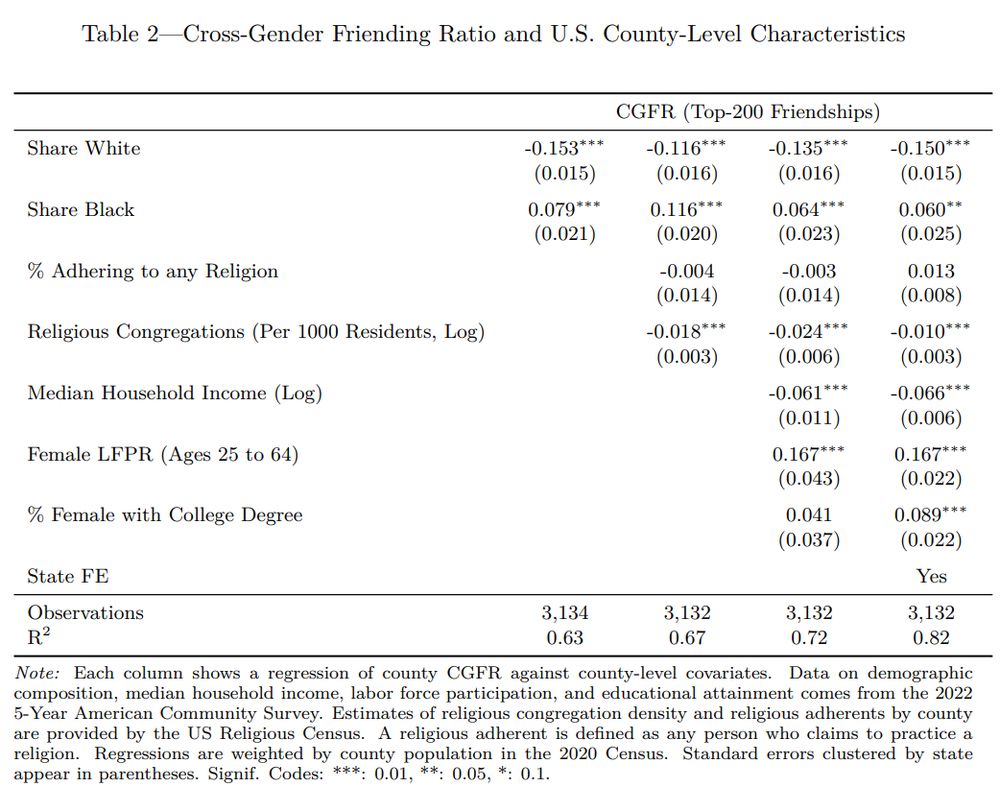
For example, it comes out that white people and rich people tend to have lower Cross-Gender Friending Ratios than poor, black, or Hispanic people. Religion's role is a bit more ambiguous.
6/
For instance, having a higher Cross-Gender Friending Ratio usually means a country is more accepting of basic feminist ideas, and is likely to have higher female labour force participation.
5/

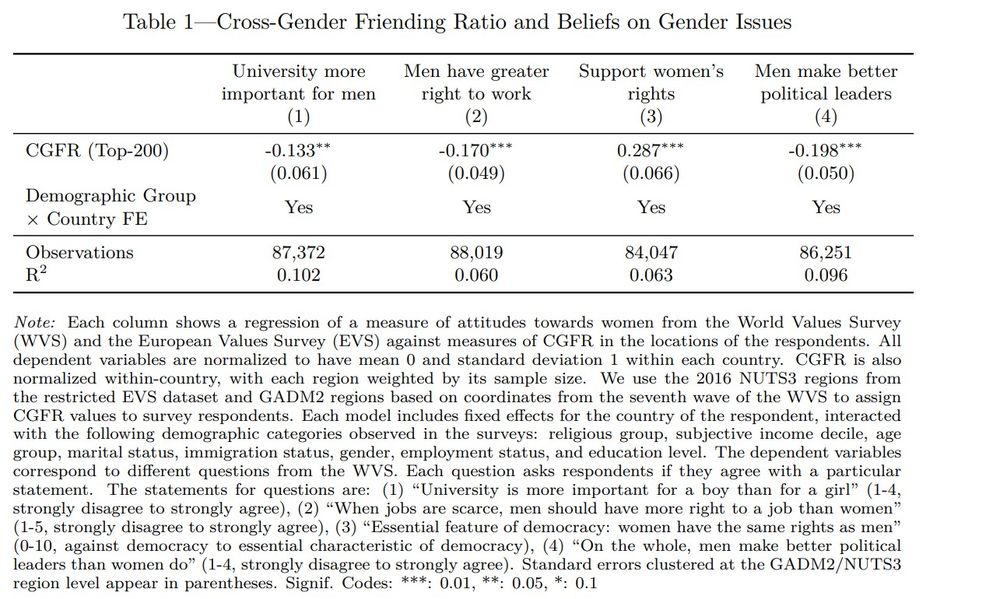
For instance, having a higher Cross-Gender Friending Ratio usually means a country is more accepting of basic feminist ideas, and is likely to have higher female labour force participation.
5/
Rates are lowest in traditionally Muslim areas like the Middle East and north Africa, and highest in Latin America and parts of Sub-Saharan Africa. Interestingly, Europe and the US are somewhere in the middle - perhaps surprisingly!
4/

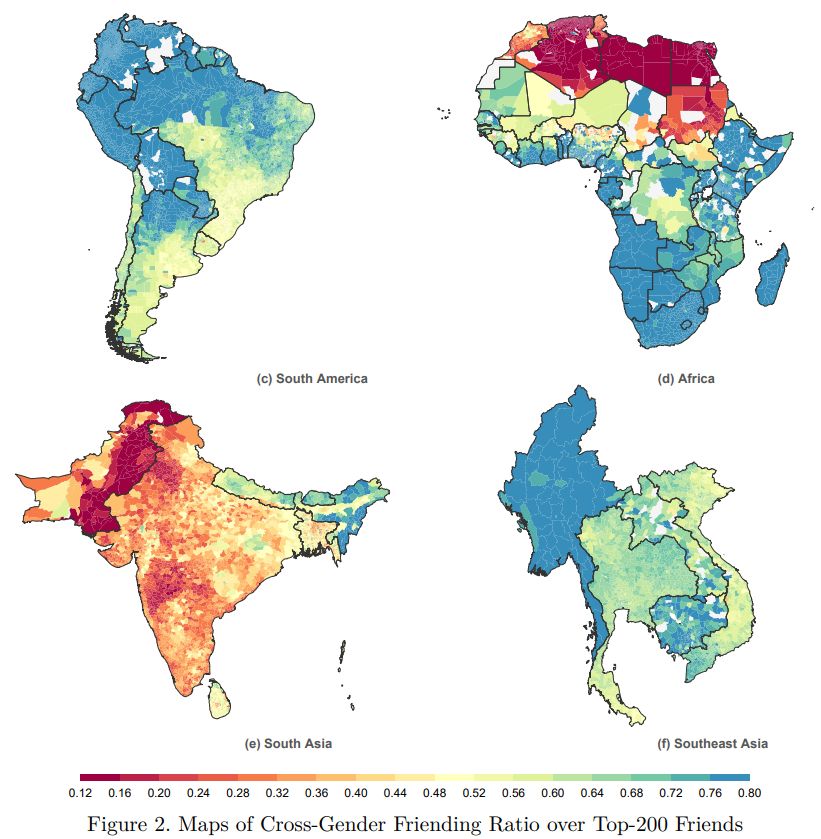
Rates are lowest in traditionally Muslim areas like the Middle East and north Africa, and highest in Latin America and parts of Sub-Saharan Africa. Interestingly, Europe and the US are somewhere in the middle - perhaps surprisingly!
4/
Gender often defines or colours our social networks and interactions. We might be more or less likely to make friends with someone because of their gender.
How does this look on the global scale, and how do we measure it?
1/

Gender often defines or colours our social networks and interactions. We might be more or less likely to make friends with someone because of their gender.
How does this look on the global scale, and how do we measure it?
1/
It should surprise nobody that Democrats and Independents are more willing to give up income that others may have more money or mobility, and Republicans less (unless they personally benefitted from socioeconomic mobility).
7/

It should surprise nobody that Democrats and Independents are more willing to give up income that others may have more money or mobility, and Republicans less (unless they personally benefitted from socioeconomic mobility).
7/
While people are happy to suffer a bit that others should suffer less, it seems they're less willing to risk it all in what they perceive as a zero-sum game.
6/


While people are happy to suffer a bit that others should suffer less, it seems they're less willing to risk it all in what they perceive as a zero-sum game.
6/
5/

5/
Most people are, in principle, in favour of equality. Generally, we like the idea that people at the very least have the same opportunities - and sometimes that people's outcomes aren't too extremely different.
But how far does this principle go?
1/

Most people are, in principle, in favour of equality. Generally, we like the idea that people at the very least have the same opportunities - and sometimes that people's outcomes aren't too extremely different.
But how far does this principle go?
1/
The greatest decrease, from 751 onwards, was likely due to the destructive Petexbatun wars.
7/


The greatest decrease, from 751 onwards, was likely due to the destructive Petexbatun wars.
7/
It seems that only a few families ruled most of the major centres of the Classic period, even if they then went to war with each other and forged new alliances with smaller states and lesser families.
6/

It seems that only a few families ruled most of the major centres of the Classic period, even if they then went to war with each other and forged new alliances with smaller states and lesser families.
6/
There were many major centres of power and politics which directed wars and marriages, not just the two some people thought (Tikal and Calakmul).
5/

There were many major centres of power and politics which directed wars and marriages, not just the two some people thought (Tikal and Calakmul).
5/
4/

4/
It's a of combination of two fields of mathematics - graph theory and statistics - intended to help us understand networks between people, places, and things a bit better. In essence, it's seeing how individuals in groups connect to each other - or don't.
3/

It's a of combination of two fields of mathematics - graph theory and statistics - intended to help us understand networks between people, places, and things a bit better. In essence, it's seeing how individuals in groups connect to each other - or don't.
3/
The Classic Maya period captures the imagination. Jungle temples, jaguar gods, and jewelled masks jump into the mind's eye.
Yet it's important not to exoticize these people, or forget how they lived. What was Classic Maya politics like?
1/

The Classic Maya period captures the imagination. Jungle temples, jaguar gods, and jewelled masks jump into the mind's eye.
Yet it's important not to exoticize these people, or forget how they lived. What was Classic Maya politics like?
1/
7/

7/
Average lifespans among enslaved people seem to have decreased in the 1790s, and many new arrivals did not survive long enough to have children. This resulted in an increase in the creole proportion of the population.
6/


Average lifespans among enslaved people seem to have decreased in the 1790s, and many new arrivals did not survive long enough to have children. This resulted in an increase in the creole proportion of the population.
6/
In fact, around 40% of St Croix's enslaved population 1750-1807 arrived in the 1790s! Because owning people wasn't going to be banned, slavers just stocked up.
5/


In fact, around 40% of St Croix's enslaved population 1750-1807 arrived in the 1790s! Because owning people wasn't going to be banned, slavers just stocked up.
5/
On 1 January 1803, the slave trade was ended in the realms of the King of Denmark. The abolition had been announced just over a decade earlier in 1792.
How did life change for enslaved people in the decade between those dates?
1/
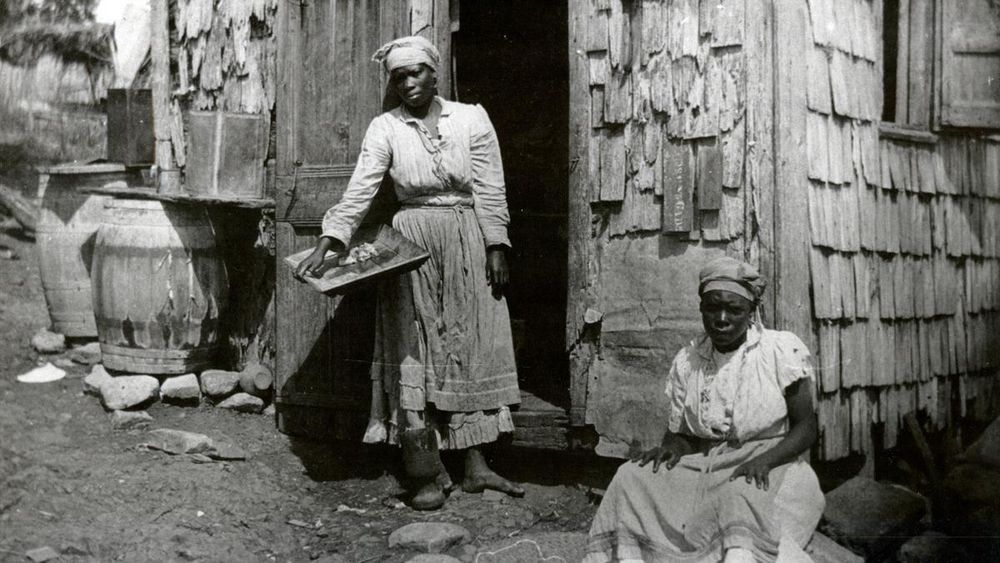
On 1 January 1803, the slave trade was ended in the realms of the King of Denmark. The abolition had been announced just over a decade earlier in 1792.
How did life change for enslaved people in the decade between those dates?
1/
7/

7/

